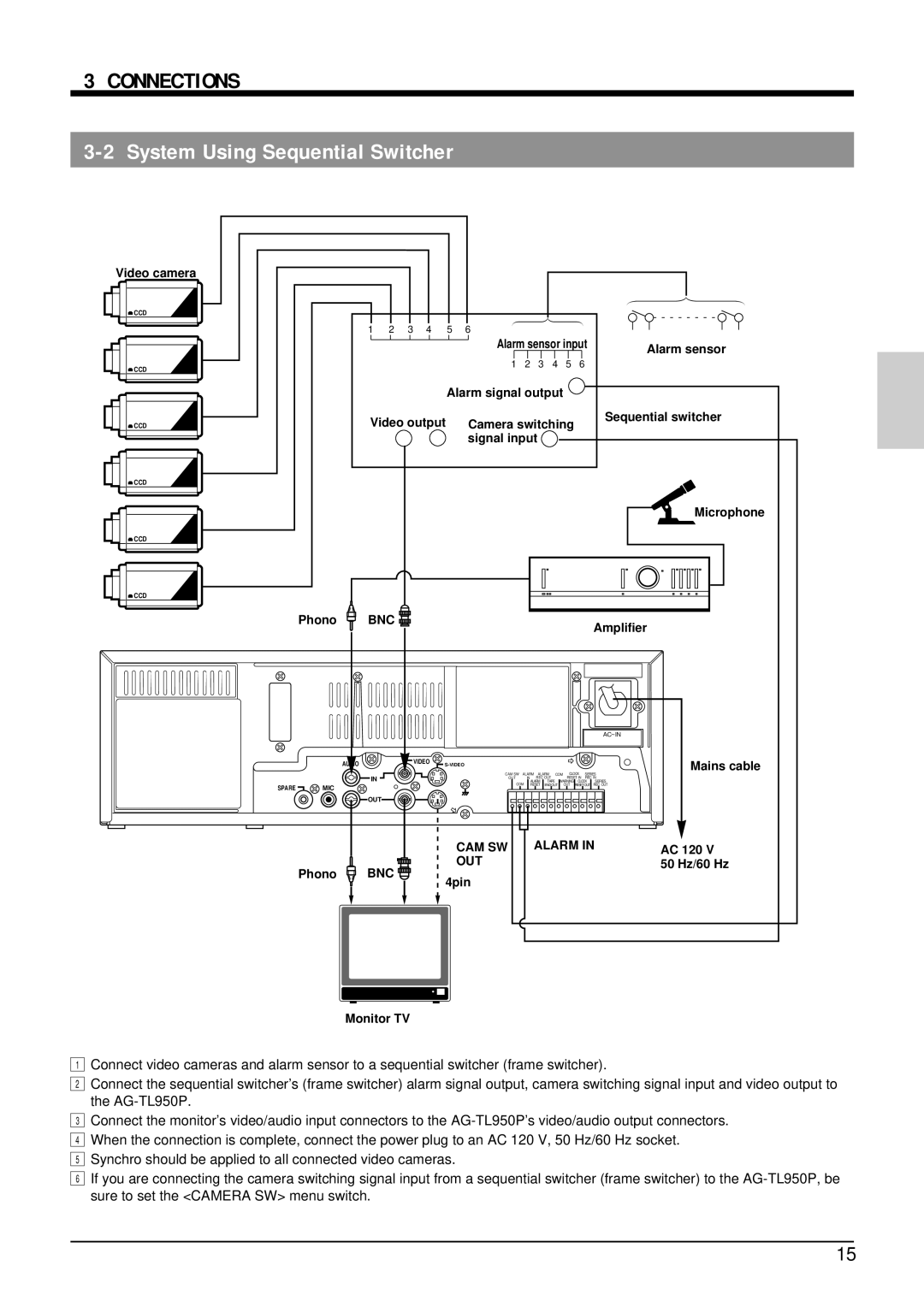AG-TL950 specifications
The Panasonic AG-TL950 is a professional-grade broadcast monitor designed to meet the rigorous standards of the film and television industry. This monitor is particularly geared towards production environments that require precision, reliability, and high-quality imaging. With its rich feature set and advanced technologies, the AG-TL950 is a powerful tool for any broadcast or film professional.One of the standout features of the AG-TL950 is its high-resolution display. The monitor supports 4K resolution, providing crystal-clear image quality and allowing users to see fine details that are critical during production and editing processes. This high resolution, combined with excellent color accuracy, ensures that content creators can trust the colors they are seeing on-screen, which is essential for color grading and post-production work.
The AG-TL950 also employs advanced HDR (High Dynamic Range) technology, which enhances the monitor’s contrast and color range, allowing for a more realistic and immersive viewing experience. This makes it particularly valuable for filmmakers and production teams working on projects that require adherence to modern HDR standards.
Connectivity is another strong suit of the AG-TL950. The monitor is equipped with a variety of input options, including 12G-SDI, HDMI, and both analog and digital audio inputs. This flexibility allows it to integrate smoothly into existing production workflows and ensures compatibility with a wide range of video sources.
In addition to its impressive visual capabilities, the AG-TL950 includes essential features for professional monitoring. It offers waveform and vector scope displays, allowing users to analyze and adjust their signals accurately. Furthermore, the monitor has customizable monitoring options, enabling users to set up to 16 user-defined presets for quick access to their most-used settings.
The design of the AG-TL950 reflects its professional focus, with a robust build quality that speaks to its reliability in dynamic production environments. Its lightweight design makes it easy to transport, while the wide viewing angles ensure that multiple crew members can view the monitor clearly from different positions.
In conclusion, the Panasonic AG-TL950 monitor integrates advanced display technology, versatile connectivity, and user-friendly monitoring features. It stands out as an essential tool for professional filmmakers and broadcast engineers, enabling them to create high-quality visuals with accuracy and confidence.

